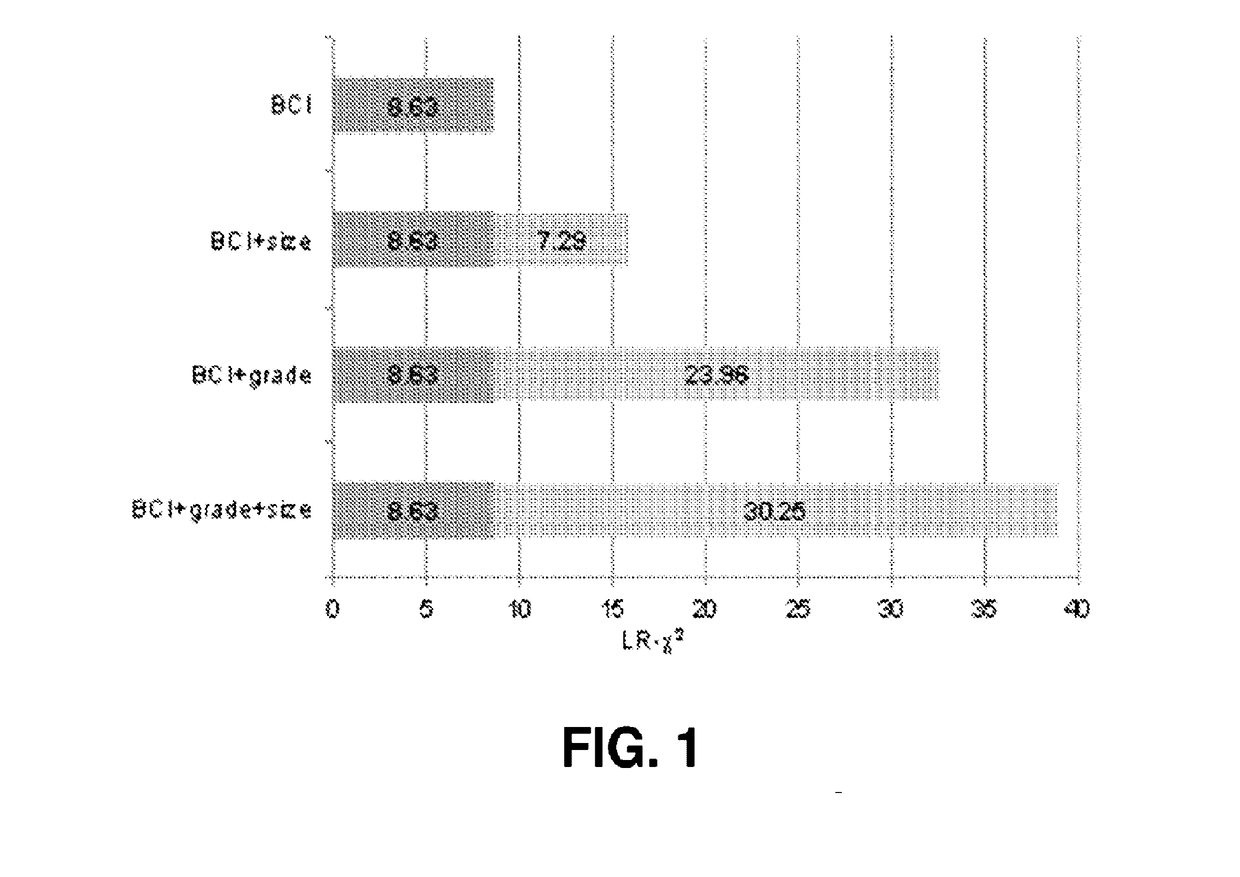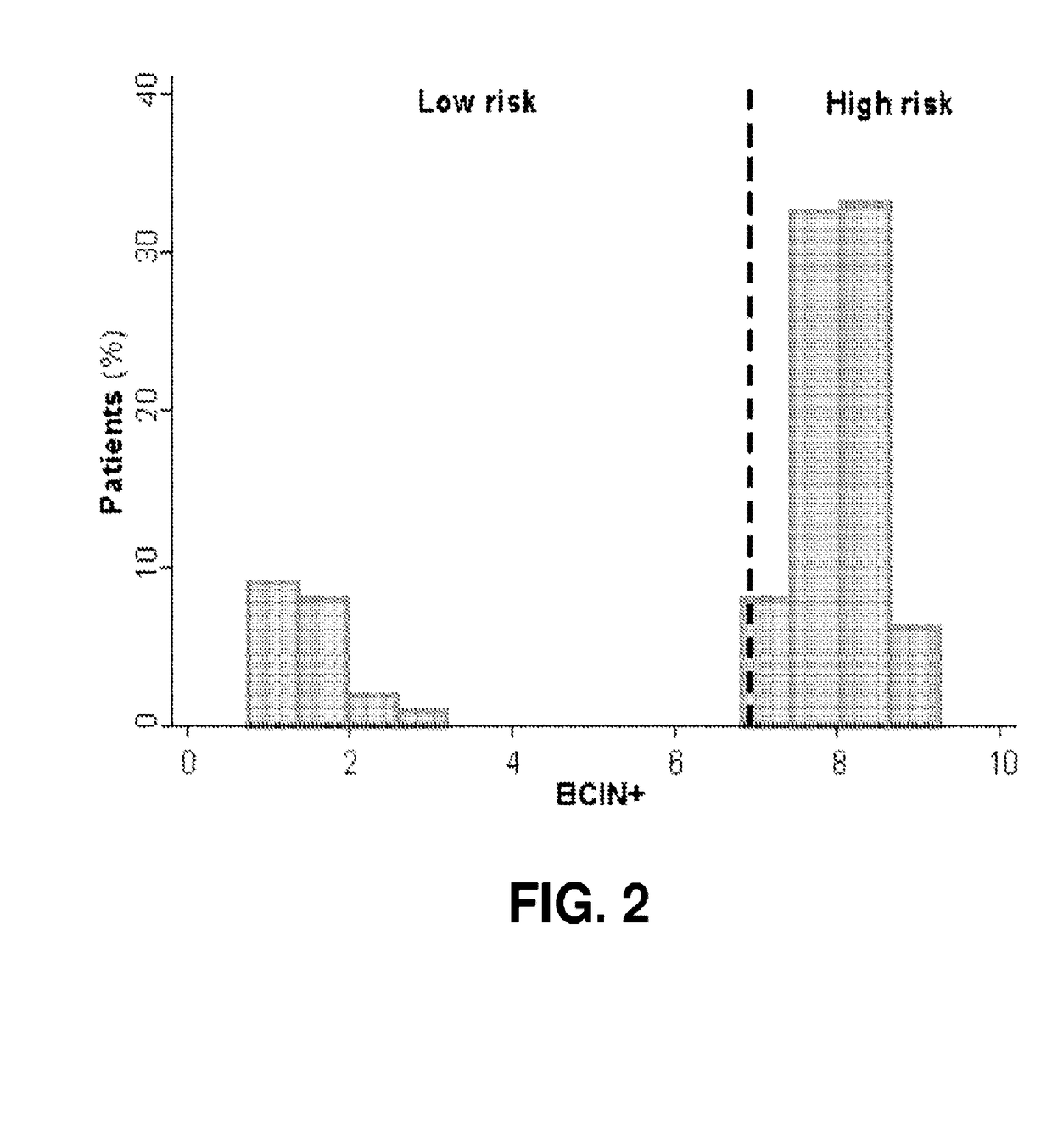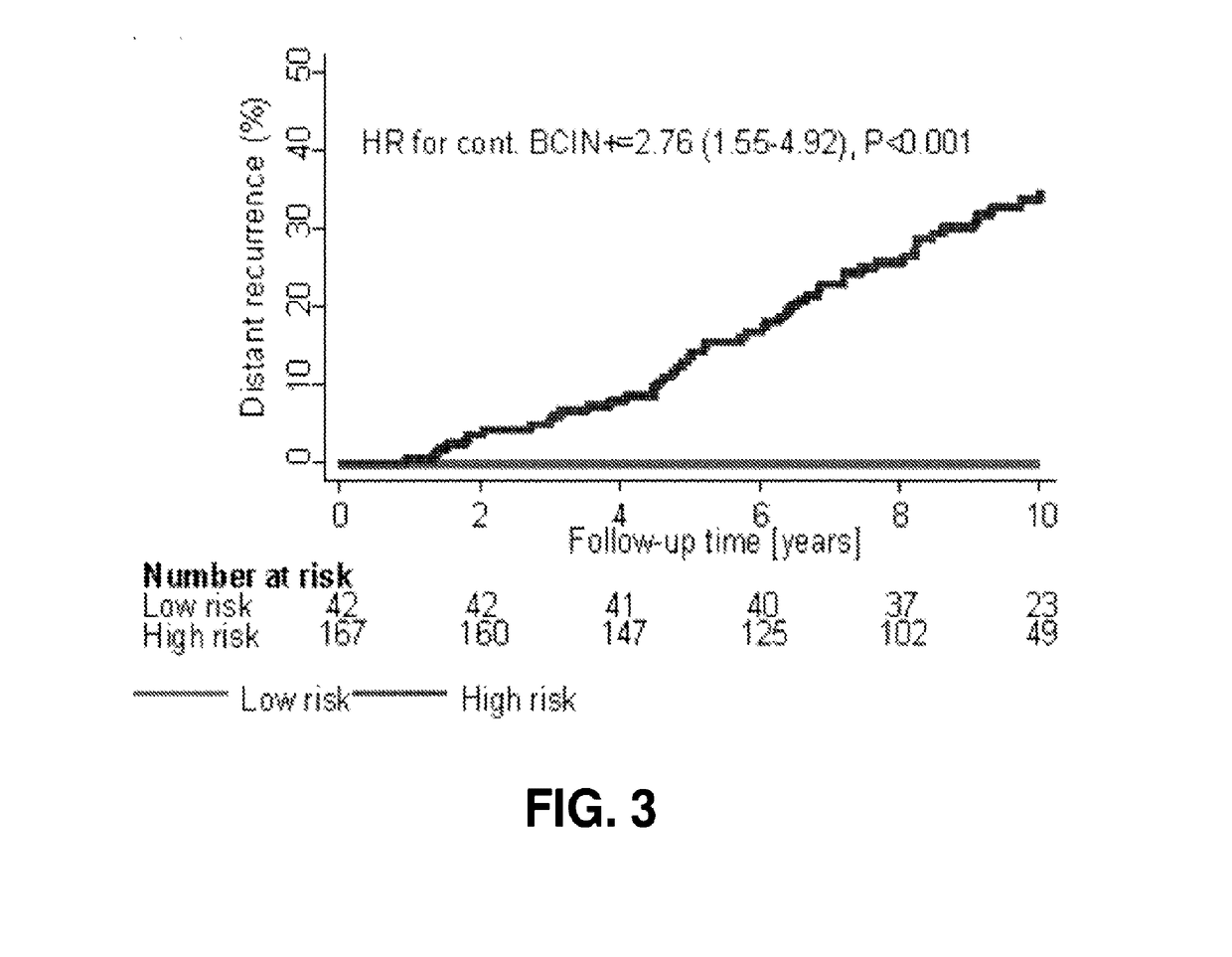Integration of tumor characteristics with breast cancer index
a tumor characteristic and index technology, applied in the direction of microorganism testing/measurement, biochemistry apparatus and processes, organic active ingredients, etc., can solve the problems of patient sustained risk of disease recurrence and death for at least 15 years, and achieve the effect of effective predicting the risk of recurrence and responsiveness to treatmen
- Summary
- Abstract
- Description
- Claims
- Application Information
AI Technical Summary
Benefits of technology
Problems solved by technology
Method used
Image
Examples
example 1
Integration of Tumor Size and Grade with the Breast Cancer Index for the Prediction of Distant Recurrence in HR+ Breast Cancer with 1-3 Positive Lymph Nodes
[0203]This example describes a gene expression-based assay that combines two independent biomarkers: the HOXB13:IL17BR expression ratio (H / I), which interrogates estrogen signaling, and the Molecular Grade Index (MGI), which quantifies tumor proliferation (see e.g. Zhang et al., 2013, Clin Cancer Res 19, 4196-4205). The combination is referred to as a Breast Cancer Index (BCI). MGI utilizes the combined expression of five genes, BUB1B, CENPA, NEK2, RACGAP1 and RRM2. BCI significantly predicted 10 year distant recurrence (DR) beyond the clinicopathological factors in estrogen receptor positive (ER+), lymph node negative (LN−) breast cancer patients in three cohorts (see e.g. Zhang et al., 2013; Sgroi et al., 2013, Lancet Oncol. 14:1067-1076). BCI also was prognostic in lymph node positive (LN+) patients in transATAC and MA.14 (Sgr...
example 2
Validation of BCIN+ Model for Predicting Distant Recurrence in Hormone Receptor-Positive (HR+) Breast Cancer with 1-3 Positive Nodes
[0229]Women diagnosed with HR+, invasive breast cancer with 1-3 positive nodes (N1 disease) between 1993 and 2007 who received adjuvant endocrine therapy (ET) with or without chemotherapy, at least 5 years of follow-up, and available FFPE tumor blocks were selected for study (N=402). Median follow-up was 12 years. Average patient age was 53 years. Patients included both pre- and post-menopausal women (39%<50 years old; 61%≧50 years old). 81% of patients were treated with adjuvant chemotherapy. All patients were treated with adjuvant ET (TAM=48%; AI=17%; TAM+AI sequence=35%), with 276 treated with up to 5 years of adjuvant ET. Most patients received adjuvant chemotherapy (81%). Most patients had ductal histology (86%). The majority of tumors were T1 (62%) or T2+ (35%). 17%, 56%, and 26% of tumors were grade 1, 2, and 3, respectively. Additional baseline ...
example 3
Subset Analysis of Impact of Treatment History on BCIN+ Prognostic Ability
[0236]The patient population of Example 2 was analyzed to assess the impact of treatment history on the prognostic ability of a BCIN+ model as in Example 1. BCIN+ risk scores were determined and patients stratified into low risk or high risk categories using a pre-specified cut-point, blinded to clinical outcome. Kaplan-Meier survival analysis was used to estimate overall (0-15 year) and late (5-15 year) distant recurrence (DR), and the difference was evaluated by log-rank test. Treatment-specific subsets were analyzed based on adjuvant endocrine (tamoxifen (TAM)) only versus any history of aromatase inhibitors (AI), and adjuvant chemotherapy treatment history. As explained in Example 2, BCIN+ classified 20% of patients in this population as low risk, and 80% as high risk.
[0237]In patients treated with TAM only, BCIN+ low risk and high risk had significantly different 15-year rates of DR of 4.0% (95% CI 0.0-11...
PUM
| Property | Measurement | Unit |
|---|---|---|
| time | aaaaa | aaaaa |
| time | aaaaa | aaaaa |
| time | aaaaa | aaaaa |
Abstract
Description
Claims
Application Information
 Login to View More
Login to View More - R&D
- Intellectual Property
- Life Sciences
- Materials
- Tech Scout
- Unparalleled Data Quality
- Higher Quality Content
- 60% Fewer Hallucinations
Browse by: Latest US Patents, China's latest patents, Technical Efficacy Thesaurus, Application Domain, Technology Topic, Popular Technical Reports.
© 2025 PatSnap. All rights reserved.Legal|Privacy policy|Modern Slavery Act Transparency Statement|Sitemap|About US| Contact US: help@patsnap.com



